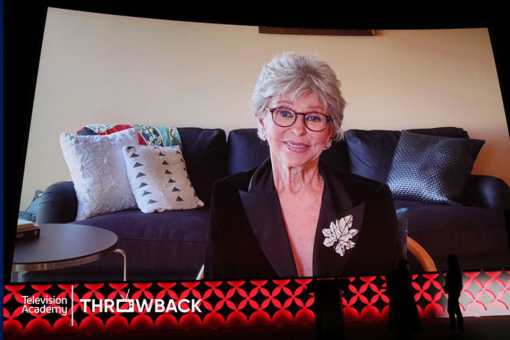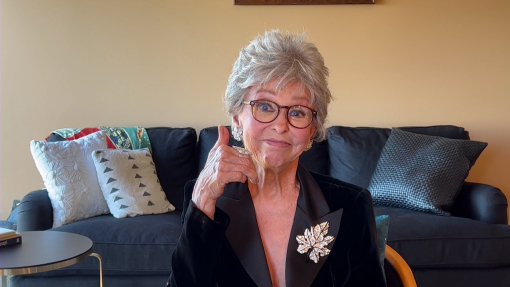Fred Coe, the medium’s first creative producer, was the architect of the television drama.
At a time when television plays were largely truncated adaptations of old novels, biographies, and stale Broadway offerings, Coe arrived to pioneer the original television drama. Thus, he helped to give home-screen dramatic fare (and, by extension, the medium itself) its own particular shape, its own creative definition — indeed, its own sense of self.
With Coe at its helm, NBC’s Philco/Goodyear Television Playhouse became the standard-bearer for all dramatic programming on television during the era of live anthology shows. Through the program, he helped invent television’s first dramatic language, in which, according to broadcast historian Erik Barnouw, “the close-up became all-important … The human face became the stage on which the drama was played.”
A native of Alligator, Mississippi, Coe, an only child, was born on December 23, 1914, to a widowed public-health nurse, and grew up in Buckborn, Kentucky, and Nashville. Tennessee. A tall, handsome, sandy-haired youngster, he started writing plays during adolescence. That interest in the theater continued throughout his years at Peabody College for Teachers in Nashville.
From 1938 to 1940, he studied at Yale Drama School, returned to the South during the war years to direct community theater, and organized several dramatic shows for radio station WSM in Nashville.
In 1946, he moved to New York to take a job as a production manager at NBC. He soon found himself writing and directing various shows, including the experimental Borden Show, which offered bits and pieces of everything: variety shows, dramas, films, and marionette shows. That was in 1947. The following year, he began directing a brand-new dramatic anthology show, Philco Television Playhouse.
“When the Playhouse did its first show in October 1948, all of us were convinced that it was our mission to bring Broadway to America via the television set," Coe once wrote. "And so we drew our material from the Broadway theater. We took plays, trimmed them to an hour, and cast them with Broadway players, topped by a Broadway star.”
Philco Playhouse premiered October 3 of that year with the old Broadway warhorse Dinner at Eight. The season continued with Cyrano de Bergerac, starring Jose Ferrer, and Elmer Rice's creaking Counsellor-at-Law, with Paul Muni starring in the Broadway role he had created 17 years earlier.
During the second season, it was obvious that the Philco format needed to be revitalized, or at least diversified. So Coe, now in creative control as producer, made an arrangement with Book-of-the-Month Club to present weekly dramatizations of different novels, preferably ones that were then popular. Thus, Frank Yerby's Pride's Castle, with Anthony Quinn and Jack Lemmon, opened the season, followed by What Makes Sammy Run? and Dinner at Antoine’s.
But, by midseason, the old warhorses had begun to return to the schedule. The idea of a Book-of-the Month Club approach to television drama “seemed great" at the time, said Philco dramatist David Shaw, "but television couldn't afford to bid against the movies for the rights to real best sellers. What happened was that for the most part Philco acquired a bunch of terrible books.”
During Philco's third season, Coe began to experiment tentatively with other kinds of drama: Murder at the Stork Club, adapted from a short story, and Ann Rutledge, starring a young, new actress named Grace Kelly in the role of the woman who captures Abraham Lincoln’s affections.
Those experiments, deemed successful, convinced Coe to take the next step: he would develop original plays for television. During the next two seasons, from 1950 through 1952, he encouraged his team of dramatists — Robert Alan Aurthur, David Shaw, Sumner Locke Elliot, Thomas Phipps, and Horton Foote among them — to submit original material.
In 1951, Aurthur's and H.R. Hayes’ Birth of the Movies, a biographical drama about D.W. Griffith, and David Swift’s Requiem for a Model A, about an old car’s gangster heritage, were among the show’s first original dramas. The 1952-53 schedule introduced Holiday Song, an adaptation of a Reader’s Digest article about a cantor who loses faith just before the Jewish High Holy Days and cannot bring himself to conduct services. That play was the first television offering of a young dramatist named Paddy Chayefsky.
“Fred Coe began encouraging several of us to write original plays,” David Shaw recalled,
and as these became so well received, he insisted we write more. He knew we’d eventually run out of material to adapt, and he'd invite the writers in to talk to him about our ideas. If he liked an idea, he'd say, “Pappy” — Fred always called his writers Pappy — get to your typewriter.” We never had to write treatments or outlines; all we had to do was sit down and talk to Fred. He liberated us. I'd never had a chance to write original plays before. And there were no limits with him. I wrote everything from serious drama to comedy. Very few dramatic shows would touch a comedy then, but Fred was very daring.”
On May 24, 1953, another play that also grew out of a conversation with Coe electrified the nation's viewers. That drama was about the loneliness of an Italian butcher. Marty, by Chayefsky, became the most acclaimed live drama in the medium’s history, going on as a movie to win three Oscars and making Chayefsky the first television writer to triumph in films.
Attempting to grasp the essence of the television drama Coe helped to evolve during those years, dramatist Tad Mosel once explained:
Our plays … were about real people in everyday situations. We did mostly — though not always — domestic drama, often serious things about family strife and particularly loneliness. Marty was the quintessential example of this type of drama, and this, we discovered, was what worked best on television. Our plays were made for the smallness of the screen, the intimacy of it, with the cameras in close, isolating the behavior of no more than two or three people at a time. Audiences became deeply involved with the problems of our characters, more so than on stage or in the movies. Time became collapsed in our plays, partly because the physical limitations forced us to concentrate on only a few hours, or, at most, a few days in the lives of our characters. This heightened the intimacy of the drama.
Encouraging his writers and directors, demanding the best from them, giving them the opportunity to succeed and fail and learn — and, above all, protecting them from the insistent pressures of the sponsor and the network — Coe made it possible for the medium to discover its own art.
By 1955, however, Coe was restless. Since 1949, he had produced more than three hundred television shows and launched the careers of dozens of talented writers, directors, and actors. He was anxious to move on.
He had already served as executive producer on the situation comedies Mr. Peepers and Bonino. Now he took on NBC’s Playwrights ’56 and Producers’ Showcase, the latter featuring such live, 90-minute Coe productions as Peter Pan, with Mary Martin; Darkness at Noon, with Lee J. Cobb; and The Petrified Forest, with Humphrey Bogart, Lauren Bacall, and Henry Fonda.
In 1957, he moved to CBS as producer on its prestigious Playhouse 90 anthology series and staged such dramas as The Tunnel, by David Shaw and Bo Goldman, about the Civil War battle of the Petersburg Crater.
On Broadway, he later produced or coproduced A Trip to Bountiful, Two for the Seesaw, All the Way Home, The Miracle Worker, Wait Until Dark, Gideon, and A Thousand Clowns, the last of which he also directed. In films, he returned to A Thousand Clowns as director and produced The Left Handed Gun, starring Paul Newman.
On April 29, 1979, at the age of 64, Coe died in Los Angeles while he was in the midst of producing a television version of his highly acclaimed The Miracle Worker.
This tribute originally appeared in the Television Academy Hall of Fame program celebrating Fred Coe's induction in 1986.










